Tibet is truly a paradise for landscape photographers, boasting many breathtaking sites like Mount Everest and Namtso Lake. But to capture the most stunning shots of the plateau, a bit of good preparation is always recommended.
Choosing the right time for photography is important, as each attraction shines in a different season. Also make sure to pack the proper photography gear that can handle the cold temperatures and strong UV rays of the plateau.
In this guide, we’ll walk you through everything you need to know about landscape photography in Tibet. You’ll discover the best places and times to shoot, essential gear to bring, required travel documents, dos and don’ts, and plenty of insider tips. Get ready to capture the most Instagram-worthy pictures in Tibet!
Where are the Best Places for Tibet Landscape Photography? Mt. Everest and More
Tibet is vast, so the first thing is to figure out which places are the most photogenic and find the best spots to take your photos. The following are some top recommendations for every traveler:
Mount Everest
Snow-covered and towering above the surrounding peaks, Mount Everest is the ultimate dream subject for every photographer. Many travelers visit Everest Base Camp on Tibetan side to capture its inspiring majesty up close. Sunrise and sunset offer the best light for dramatic shots.
A popular spot for photography is Rongbuk Monastery, where you can climb the nearby hill to take postcard-quality photos of Mount Everest. If you use the monastery’s tower as the foreground, your picture will become more impressive.
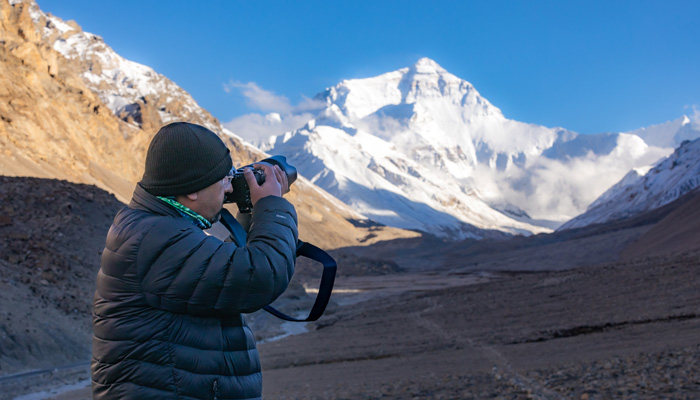 Our guest snapped an incredible view of Mount Everest from Tibet Base Camp.
Our guest snapped an incredible view of Mount Everest from Tibet Base Camp.Namtso Lake
Namtso is one of Tibet’s largest and most beautiful lakes. Depending on the season, you may photograph blue skies and calm water or clouds reflected on its surface in a snowy or barren setting. A small hill on Tashi Island on the southern shore and a steep hill near the Sacred Elephant Gate on the north side are the best spots for Lake Namtso photo sessions.
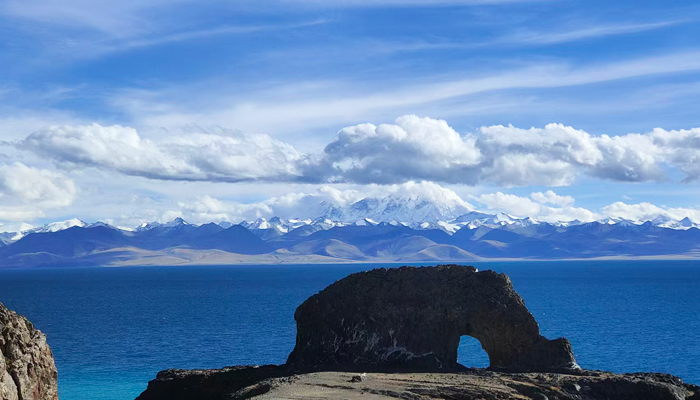 The Sacred Elephant Gate is a great spot to photograph Namtso Lake.
The Sacred Elephant Gate is a great spot to photograph Namtso Lake.Mount Kailash and Lake Manasarovar
Mythical and sacred, Mount Kailash is one of the top photography sites in remote western Tibet. Its glaciers feed the deep blue Lake Manasarovar. Visit this holy high-elevation lake to capture the peak along with the surrounding bare or snow-covered mountains, beautifully reflected on the lake's surface. The best spot for photos is Chugu Temple, located on the south side of Lake Manasarovar.
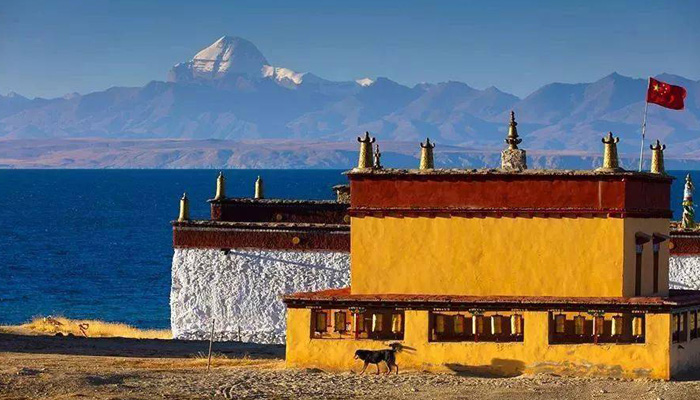 You can capture stunning Mount Kailsh pictures from the Chugu Temple.
You can capture stunning Mount Kailsh pictures from the Chugu Temple.Yamdrok Lake
Famous for its striking turquoise waters and snow-capped peaks, Yamdrok Lake is ideal for wide-angle landscape photography. Its beauty will stun you on sunny or cloudy days when white clouds roll over the surrounding green hills and pastures. The best spot for capturing the lake and the mountains in the background is Gamba La Pass.
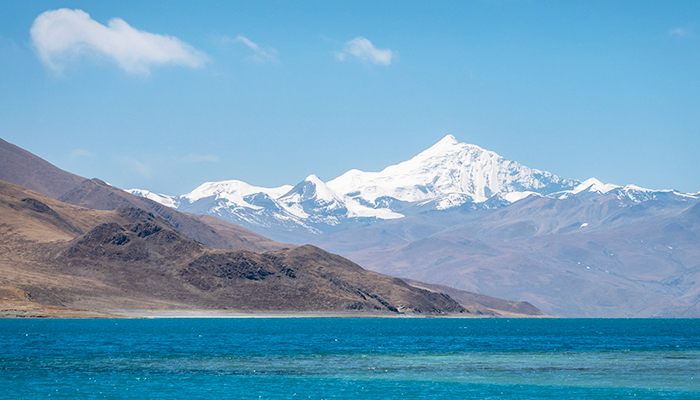 Yamdrok Lake is one of the best sites for photography in Tibet.
Yamdrok Lake is one of the best sites for photography in Tibet.Nyingchi Region
Known as "the Throne of the Sun" and "the Switzerland" of Tibet, the Nyingchi prefecture sits amidst ancient forests, lush valleys, towering mountains, alpine meadows and rivers. Each season brings its own charm, while the spring is particularly outstanding, with peach blossoms painting the landscape in pink and white.
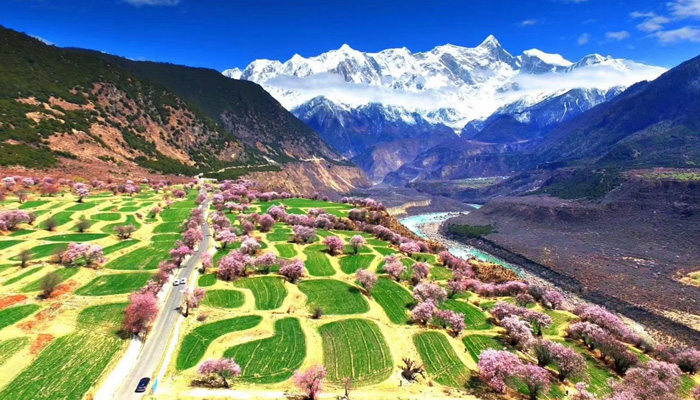 Nyingchi’s peach blossoms in full bloom are perfect for capturing beautiful photos.
Nyingchi’s peach blossoms in full bloom are perfect for capturing beautiful photos.When is the Best Time for Tibet Landscape Photography? Depending on the Attraction
Broadly speaking, the most favorable time for landscape photography in Tibet is from spring to autumn, when the weather is comfortable and suitable for outdoor exploration. But the best shooting season varies depending on the attraction.
Taking pictures of Mount Everest is most rewarding in April, May, September, and October. Taking photos of Mount Kailash and Lake Manasarovar is best in May, June, September, and October. During these months, the weather's stable without abundant rains or snow, and visibility's excellent.
Shoot Yamdrok Lake from April to June or from late September to late December for the best images. Summer monsoons bring heavy rains. The best time to capture Namtso Lake's beauty is between May and October. During this period, you will enjoy warm weather and excellent light, and photography green grasslands dotted with yaks and sheep.
 The best time to capture Namtso Lake's beauty is between May and October.
The best time to capture Namtso Lake's beauty is between May and October.Take the best Nyingchi photos from March to June, when the landscape is lush, flowery, and verdant, and rainstorms aren't likely to happen.
For snowy landscape, winter is the perfect time. The lower sun and clear skies create perfect lighting for capturing snow-capped mountains, tranquil valleys and local villages.
Join our Kailash Manasarovar tour to capture the wild beauty of western Tibet!
What Equipment Should I Bring for Landscape Photography in Tibet?
Tibet’s high-altitude environment can be challenging, so it is important to pack the right gear.
A DSLR or mirrorless camera is ideal, equipped with wide-angle lenses (16-35mm) for sweeping landscapes and telephoto lenses (70-200mm) for distant mountains. Tripods are also essential for the low light conditions like sunrise, sunset, or Milky Way photography.
Because of the strong ultraviolet radiation at high altitudes, UV filters are necessary to protect your camera and improve image quality. Temperature variations are another main hazard for cameras, so ensure that yours tolerates low temperatures. Put the camera in a protective weatherproof case, and carry wipes and microfiber cloths to deal with dust or moisture.
Also, don't buy low-quality lenses. Consider adding polarizing filters to enhance colors in skies and lakes. Don't forget to pack spare batteries because low temperatures will likely reduce their duration. Add extra memory cards in case you run out of storage space.
 Preparing proper photography equipment for the unique environment of Tibet
Preparing proper photography equipment for the unique environment of TibetWhat Travel Documents Do I Need for a Photography Trip to Tibet?
First of all, you’ll need to obtain a Tibet Travel Permit to enter Tibet. The permit can only be applied for through a local travel agency. Processing typically takes 8 or 9 days, but it’s best to allow 20 days for the approval, just in case.
The Tibet Travel Permit only allows travel within Lhasa and its surroundings. If you plan to visit remote areas like Everest Base Camp or Mount Kailash, you will also need additional documents. These include Alien's Travel Permit, Military Permit, etc.
Don’t worry - we can help you handle all the required Tibet travel documents after you book your Tibet tour with us. Simply contact us in advance and share your travel plan and ideas.
Join our most popular Lhasa and Everest Base Camp tour — with all travel documents guaranteed!
Are There Any Dos and Don'ts for Landscape Photography in Tibet?
Tibet is a deeply religious region, where all mountains and lakes are considered sacred. It is important to respect local culture and traditions when photographing this land.
Firstly, always ask for permission before you take photos inside a temple or monastery. Avoid photographing monks or locals without permission, especially when they are doing religious ceremonies or practices.
Be careful not to step on or sit on religious items such as pray flags or mani stones, when you take pictures around mountain passes, or along pilgrimage kora routes. Walk in clockwise around the stupas, temples and other religious architectures.
Keep you distance if you happen to encounter herders with Tibetan yaks or sheep, or other wild animals like Tibetan antelope. Also remember not little; carry out everything you bring in to help preserve the pristine and fragile plateau environment.
Lastly, note that drones are restricted in many parts of Tibet. Always check with your local guide before attempting to fly one.
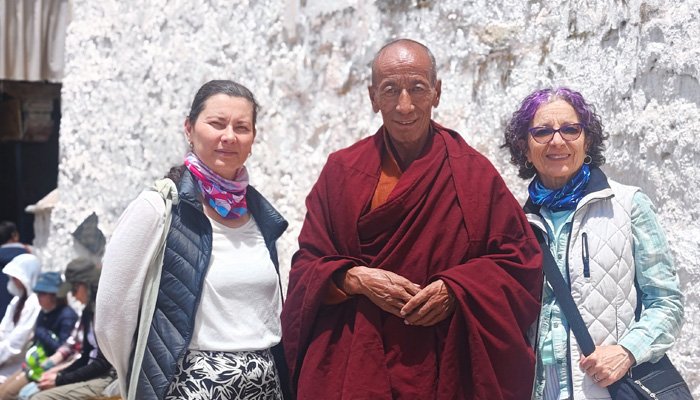 Always ask for permission before photographing local monks.
Always ask for permission before photographing local monks.Join Our Photography Tour for Expert Guidance and the Best Local Service
To make the most of your landscape photography adventure in Tibet, consider joining our photography tour led by a local photography guide and supported by one-stop tourist-friendly services.
Our local photography guides have an average of 15 years of tour experience. They know the best timings, angles and locations to capture the most stunning pictures of Tibet’s iconic landscapes, such as the golden summit of Mt. Everest. They also share authentic local insights to help you truly understand the places you are photographing.
Meanwhile, we offer seamless support throughout your journey, allowing you to visit Mount Kailash and other remote landscapes across the plateau with ease. We take care of all travel documents, cozy hotels, safe transportation, oxygen supplies, yaks and potters for trekking, and more, so you can focus entirely on your photography.
Whether you are a beginner or a professional photographer, we can customize your trip according to your shooting goals and interests. We ensure you a 100% worry-free and rewarding photography experience in Tibet!
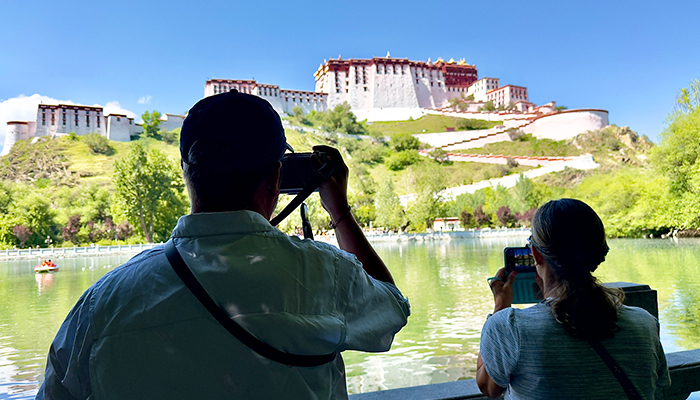 Join our Tibet photoaraphy tour to get the best services!
Join our Tibet photoaraphy tour to get the best services!Extra Tips for a Smooth Tibet Landscape Photography Experience
1. Take time to acclimate to Tibet’s high altitude. The oxygen levels are lower and the air is thinner compared to low altitudes. Spend a day or two in Lhasa to adjust properly before heading to higher elevations. Avoid demanding physical activities until you adapt.
2. You'll need warm clothes whenever you come to visit Tibet. Days may be comfortable enough for light jackets and thin sweaters. But nights call for warm layered clothing and down jackets, especially in the countryside.
3. Keep an eye on local forecast - the weather changes quickly from day to night, and vary from one place to another. Especially in summer, pay attention to rainfall, which may lead to cloudy skies or even road closures.
4. Don't change the film and lenses when it's windy. Bring a dry cloth to wipe the camera body and lenses after the rain. Also, use a plastic bag as a rain hood, if necessary.
5. Chase for the best light. Arrive early for sunrise or stay late for sunset to catch the most stunning images of the day.
Photograph the stunning landscape of Tibet on this overland journey across the Himalayas!
Conclusion
With a timely application for Tibet travel documents and proper preparation, you'll have a great time shooting various landscapes and attractions of the region. From the deep blue waters of alpine lakes to the snow-capped peaks of the Himalayas, there is no shortage of incredible scenes waiting to be captured.
Don't wait any longer - grab your camera and start your own Tibet trip to discover the majestic beauty of Tibet through photography. Feel free to contact us, and let us help you enjoy a smooth and meaningful photography journey in Tibet.
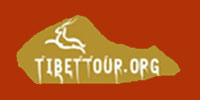




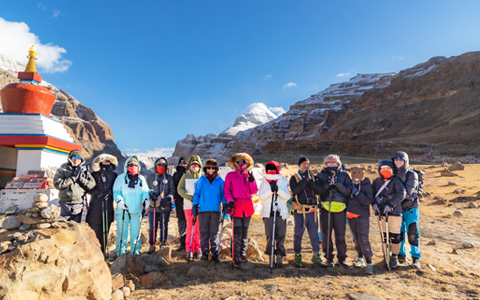


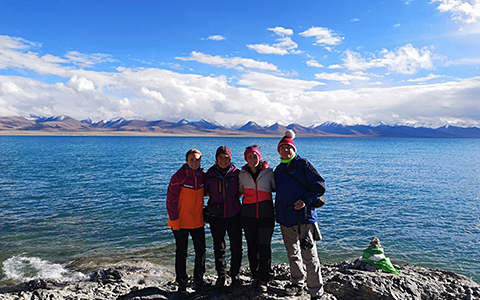
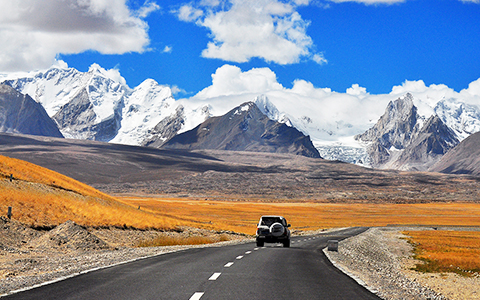

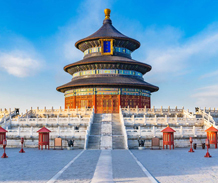
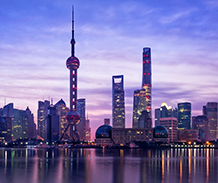
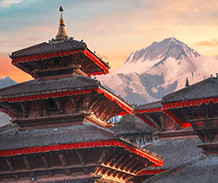
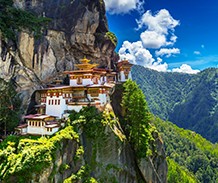
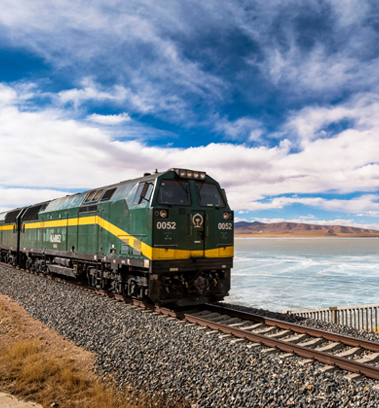

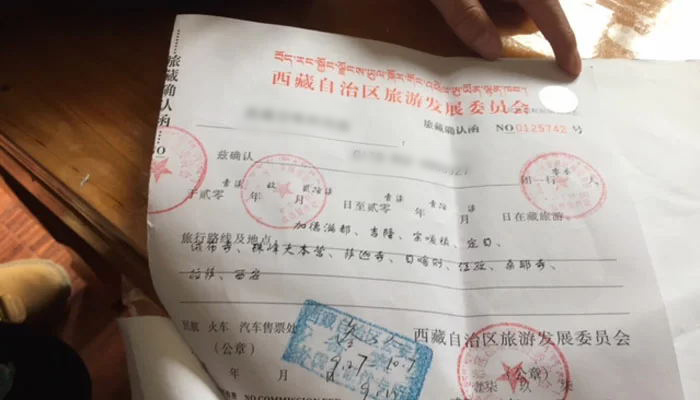
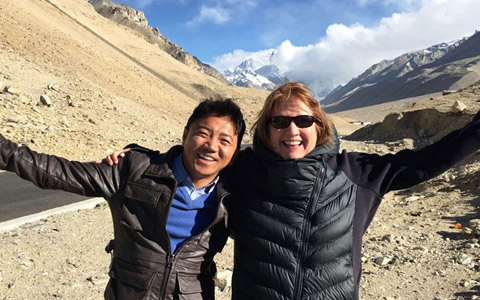
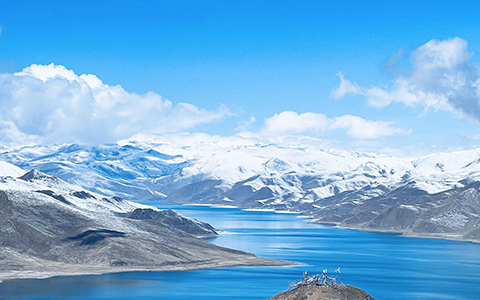
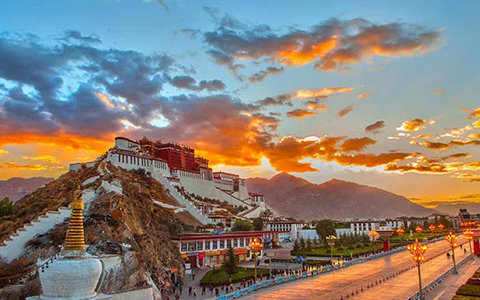
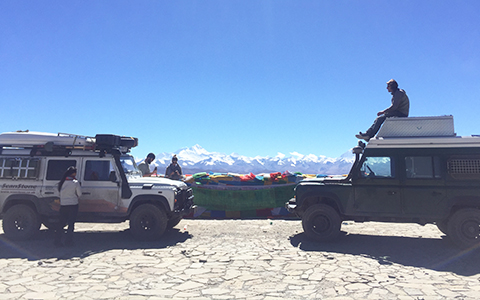


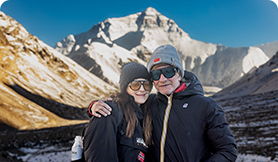

 Our guest snapped an incredible view of Mount Everest from Tibet Base Camp.
Our guest snapped an incredible view of Mount Everest from Tibet Base Camp. The Sacred Elephant Gate is a great spot to photograph Namtso Lake.
The Sacred Elephant Gate is a great spot to photograph Namtso Lake. You can capture stunning Mount Kailsh pictures from the Chugu Temple.
You can capture stunning Mount Kailsh pictures from the Chugu Temple. Yamdrok Lake is one of the best sites for photography in Tibet.
Yamdrok Lake is one of the best sites for photography in Tibet. Nyingchi’s peach blossoms in full bloom are perfect for capturing beautiful photos.
Nyingchi’s peach blossoms in full bloom are perfect for capturing beautiful photos. The best time to capture Namtso Lake's beauty is between May and October.
The best time to capture Namtso Lake's beauty is between May and October.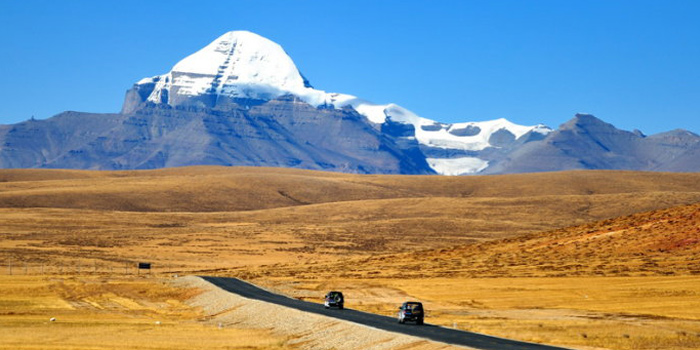
 Preparing proper photography equipment for the unique environment of Tibet
Preparing proper photography equipment for the unique environment of Tibet
 Always ask for permission before photographing local monks.
Always ask for permission before photographing local monks. Join our Tibet photoaraphy tour to get the best services!
Join our Tibet photoaraphy tour to get the best services!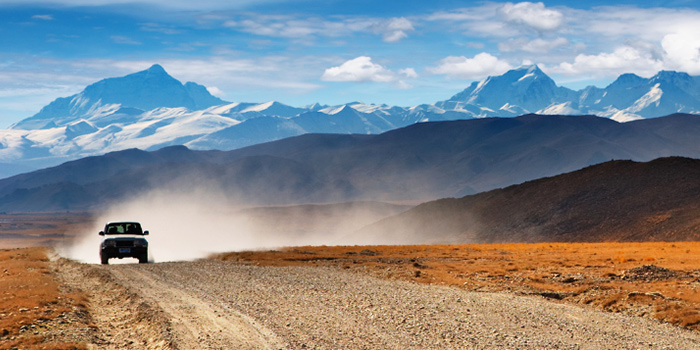
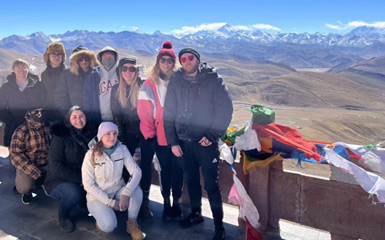

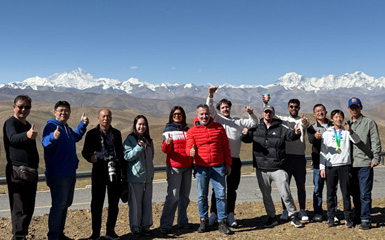
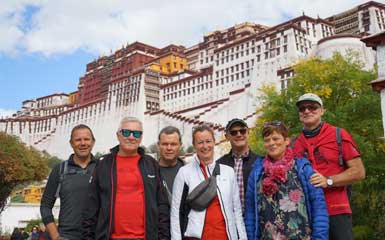
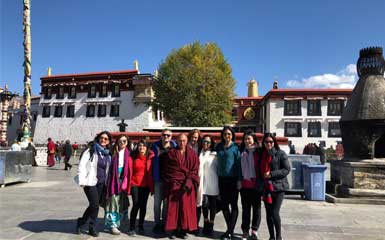

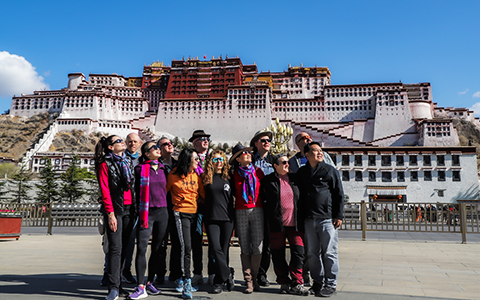
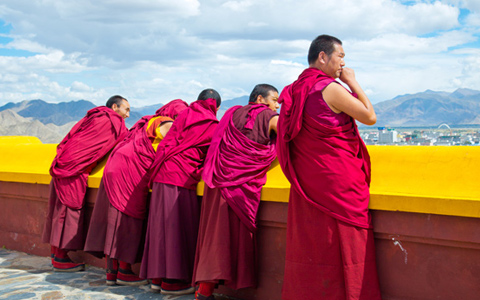
Ask a Quick Question